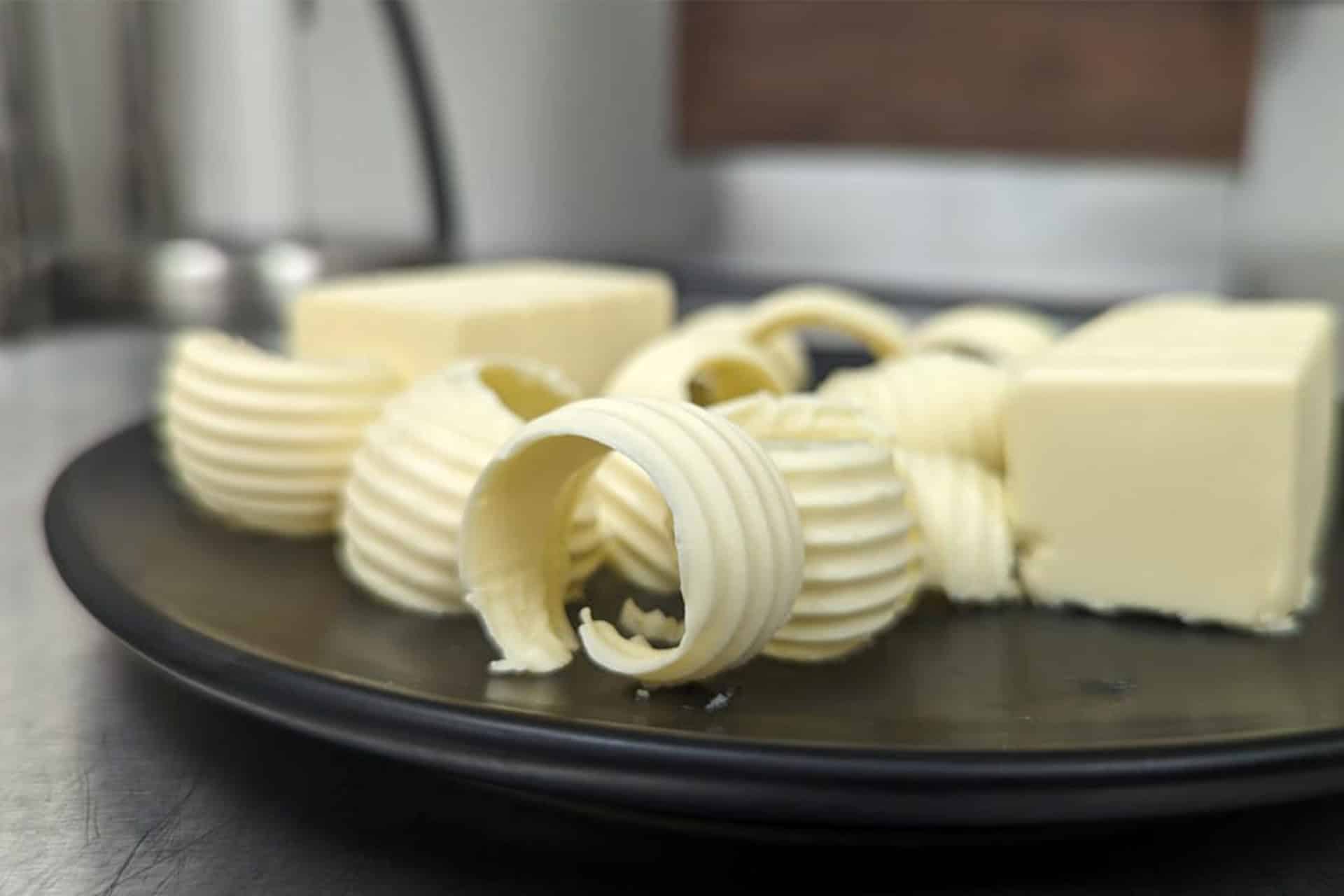A California-based startup called Savor has figured out a unique way to make a butter alternative that doesn’t involve livestock, plants, or even displacing land. Their butter is produced from synthetic fat made using carbon dioxide and hydrogen, and the best part is —- it tastes just like regular butter.



It wouldn’t offset much, given the upper price for direct air capture here https://www.iea.org/commentaries/is-carbon-capture-too-expensive at a little under $350/ton, and assuming a pound of ‘butter’ comes entirely from CO2 (some will by hydrogen based on the article, but assuming that’s negligible) that means at most the credit should be 16¢ per pound, which is 3.4% of the average cost of a pound of butter ($4.69, https://fred.stlouisfed.org/series/APU0000FS1101). My cost of butter is below average and it’s still only a 4.5% subsidy.
Edit to add: if you count the CO2 production from obtaining the milk used for real butter against the cost as well (let’s assume the resources for this process and the process of making milk into butter are similar), it seems like producing a pound of butter is emits around 4 kg of CO2, which nets you another $1.4 on each package of butter (if you use the lower number for carbon capture this is a total of $0.6 including the pound of capture from above). This is actually pretty significant, so if there was a tax for greenhouse gas emissions to cover the cost of recapture it would help a product like this be more viable.